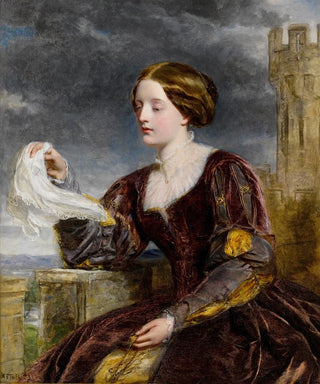Art print | The Signal - William Powell Frith


View from behind

Frame (optional)
In the vast panorama of art history, certain works stand out for their ability to capture the essence of an era while offering a profound reflection on the human condition. "The Signal" by William Powell Frith is one of those iconic pieces that transcends the simple artistic frame to become a living testament to Victorian society. This painting, rich in detail and narrative, invites the viewer to immerse themselves in a world where each character tells a story, where every gesture and gaze is loaded with meaning. The scene depicted by Frith, vibrant with life and emotion, transforms into a true mirror of its time, revealing the aspirations, concerns, and interactions of individuals within a community.
Style and uniqueness of the work
Frith's style, rooted in realism, is characterized by incredible meticulousness and particular attention to detail. "The Signal" is no exception to this rule, offering a bustling tableau of moving characters, each seemingly emerging from a complex narrative. Frith excels in the art of capturing human expressions, making each face unique and expressive. The composition of the piece, both dynamic and balanced, guides the viewer's eye through the various interactions taking place in the scene. Light plays a crucial role, accentuating textures and colors, and creating an atmosphere that is both lively and melancholic. This painting, by highlighting elements of daily life, transcends mere aesthetic pleasure to become a reflection on human relationships and the social issues of its time.
The artist and his influence
William Powell Frith, born at the heart of the 19th century, is often regarded as one of the masters of British realism. His career, marked by a deep commitment to faithful representation of modern life, has left an indelible mark on the art world. Frith was able to capture the spirit of his time, navigating between social and technological changes that shaped Victorian society. His work not only influenced his contemporaries but also continues to inspire many artists today. Addressing themes such as social class, morality, and interpersonal relationships, Frith paved the way

Matte finish

View from behind

Frame (optional)
In the vast panorama of art history, certain works stand out for their ability to capture the essence of an era while offering a profound reflection on the human condition. "The Signal" by William Powell Frith is one of those iconic pieces that transcends the simple artistic frame to become a living testament to Victorian society. This painting, rich in detail and narrative, invites the viewer to immerse themselves in a world where each character tells a story, where every gesture and gaze is loaded with meaning. The scene depicted by Frith, vibrant with life and emotion, transforms into a true mirror of its time, revealing the aspirations, concerns, and interactions of individuals within a community.
Style and uniqueness of the work
Frith's style, rooted in realism, is characterized by incredible meticulousness and particular attention to detail. "The Signal" is no exception to this rule, offering a bustling tableau of moving characters, each seemingly emerging from a complex narrative. Frith excels in the art of capturing human expressions, making each face unique and expressive. The composition of the piece, both dynamic and balanced, guides the viewer's eye through the various interactions taking place in the scene. Light plays a crucial role, accentuating textures and colors, and creating an atmosphere that is both lively and melancholic. This painting, by highlighting elements of daily life, transcends mere aesthetic pleasure to become a reflection on human relationships and the social issues of its time.
The artist and his influence
William Powell Frith, born at the heart of the 19th century, is often regarded as one of the masters of British realism. His career, marked by a deep commitment to faithful representation of modern life, has left an indelible mark on the art world. Frith was able to capture the spirit of his time, navigating between social and technological changes that shaped Victorian society. His work not only influenced his contemporaries but also continues to inspire many artists today. Addressing themes such as social class, morality, and interpersonal relationships, Frith paved the way






